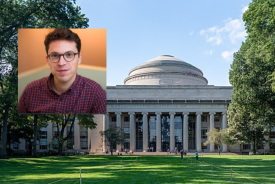California Community Colleges' Low College Fees Scutinized, New Plan Could Restrict Fee Waivers
ByCalifornia community colleges have by far the lowest tuition and fees cost in the United States - less than half the national average - but at least 40 percent of the 2.4 million students enrolled in the colleges do not pay them, the Associated Press reported.
This is due, in large part, to an unusual financial aid program used by the largest U.S. system of higher education and a 50-year-old vision that made affordability and open access the chief purpose of the two-year schools.
California community colleges charge $1,380 a year for a full-time load; these charges are frequently waived for students who meet the income and social eligibility criteria. During the recent economic downturn the system gave out more fee revenue - $577 million - than the $361 million it collection, according to 2011-12 data from the California community college chancellor's office.
This generosity is having an adverse affect on community colleges.
"The community college system is supposed to be affordable for all, but we have shot ourselves in the foot by trying to achieve that through low tuition," Steve Boilard, a former legislative higher education analyst who now directs the Center for California Studies at Sacramento State, told the AP.
According to the AP, California's community college system governing board has begun a slow process of restricting its fee waivers, "which have been criticized for carrying few conditions and income cutoffs that could allow a family of four earning as much as $90,000 annually to qualify."
The governing board on Tuesday will vote on a measure that would require students with fee waivers to maintain at least a C-average over two consecutive terms. The disadvantaged are exempt from this plan.
Under the proposed change, which would take effect in Fall 2016 if passed, nearly 50,000 recipients could lose their fee waivers, Linda Michalowski, vice chancellor for student services and program, told the AP.
"For a student to enroll and do poorly academically, drop out, come back and do poorly, that does not correlate with student success, yet our policy on the fee waiver has said it doesn't matter; you can fail and fail and fail and come back and we will support you again," Michalowski said. "That doesn't benefit anybody."
Boilard told the AP that he believes that California State should not only restrict waivers but substantially raise the admission price.
As state funding declined by $1.5 billion over four years, lawmakers raised fees three times, to the current price of $46 per college credit. However, most of the anticipated revenue was "eaten" up by the waivers causing colleges to cut courses and enrollment, Boilard added.
Long Beach City College President-Chancellor Elroy Oakley, told the AP he believe it's time for the state to re-examine fee exemptions and other financial aid, as well as a dramatic fee increase.
"There is a lot of room to raise more revenue and still be below the national average in terms of fees," he said. If the fees were higher, students could still access federal aid and "would be paying nothing more, and then that money would be going back into the institutions, which is, frankly, what 49 other states in the nation do."
Oakley estimates four of every five course credits taken by his 31,000 students are subject to waivers.
The current fees of California's community college are a legacy to its exalted 1960 Master Plan for Higher Education. Under the plan the colleges' primary mission was to "offer academic and vocational instruction at the lower division level for both younger and older students."
Western Interstate Commission for Higher Education President David Longanecker told the AP he believes the 1960 plan needs to be revamped or scrapped.
"In the 20th century, we were trying to encourage people to go to college and that made a heck of a lot of sense in the 1960s when California was a wealthy state," Longanecker said. "Today, California is no longer a wealthy state and we are turning people away from college who want to come. What we have now is a low-cost pricing scheme that is starving the system and doesn't make sense in the 21st Century."
© 2025 University Herald, All rights reserved. Do not reproduce without permission.








